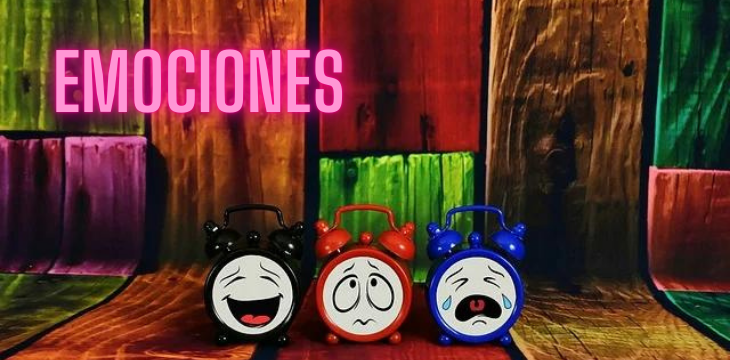Ever felt like your emotions are a wild roller coaster, taking you up to dizzying heights one moment and plunging you into the depths the next? You’re not alone. Emociones, or emotions, are a fundamental part of the human experience, shaping our thoughts, actions, and interactions. But why do they sometimes feel so overwhelming? Let’s dive into the world of emotions, exploring what they are, why they matter, and how to navigate them with grace and understanding.
Table Of Contents
What Are Emociones?
Defining Emociones
Emociones are complex reactions that involve both our mind and body. They can be triggered by external events, like a surprise birthday party, or internal thoughts, like worrying about an upcoming exam. Emociones encompass:
- Physical sensations: Your heart racing, sweaty palms, or butterflies in your stomach.
- Cognitive responses: Thoughts like “I’m so happy!” or “This is terrifying.”
- Behavioral reactions: Actions such as laughing, crying, or clenching your fists.
The Science Behind Emociones
Our brain is the master conductor of emociones, particularly the limbic system, which includes the amygdala and hippocampus. These regions help process and regulate emotions. When you encounter a stressful situation, for example, your amygdala kicks into gear, triggering a cascade of reactions that prepare your body to fight or flee.
The Power of Emociones
Emociones and Decision-Making
Ever made a decision on a gut feeling? That’s your emociones at work. Emociones can provide valuable insights and help us make decisions quickly, especially when time is of the essence. However, relying solely on emotions can sometimes lead to impulsive choices, so it’s crucial to balance them with rational thinking.
Emociones and Relationships
Our connections with others are deeply influenced by our emociones. Positive emotions like love and joy can strengthen bonds, while negative ones like anger and jealousy can create friction. Understanding and managing your emotions can lead to healthier, more fulfilling relationships.
Embracing Your Emociones
Acknowledge Your Feelings
The first step to embracing your emotions is recognizing them. It’s easy to ignore or suppress emotions, but doing so can lead to greater stress and unhappiness. Try to:
- Identify: Name the emotion you’re feeling. Is it anger, sadness, or excitement?
- Accept: Allow yourself to feel the emotion without judgment. It’s okay to feel this way.
Express Your Emociones
Bottling up emotions isn’t healthy. Find healthy outlets to express your emociones, such as:
- Talking to a friend: Share your feelings with someone you trust.
- Writing in a journal: Putting your thoughts on paper can be incredibly cathartic.
- Creative outlets: Engage in activities like painting, dancing, or playing music to express what you’re feeling.
Practice Mindfulness
Mindfulness is about staying present and fully engaging with the here and now. It can help you become more aware of your emociones and how they affect you. Techniques include:
- Meditation: Spend a few minutes each day in quiet reflection.
- Deep breathing: Use breath-focused exercises to calm your mind and body.
- Body scanning: Pay attention to how different parts of your body feel and release any tension.
Emociones in Different Cultures
Cultural Differences
Emociones are universal, but the way they are expressed and interpreted can vary widely across cultures. For instance, in some cultures, showing strong emotions like anger might be frowned upon, while in others, it’s perfectly acceptable. Understanding these cultural nuances can enhance your empathy and communication skills.
Emociones in Art and Literature
Art and literature have always been powerful mediums for expressing emociones. From Shakespeare’s tragic heroes to Van Gogh’s swirling skies, emotions are vividly portrayed and evoke deep responses from their audiences. Exploring these works can provide insights into your emotions and how they resonate with others.
FAQs About Emociones
1. Why do I sometimes feel overwhelmed by my emotions?
Feeling overwhelmed can happen when emotions build up without being acknowledged or expressed. Practicing mindfulness and finding healthy outlets can help manage these feelings.
2. Can emotions be controlled?
While you can’t always control the initial emotional response, you can learn to manage how you react to it. Techniques like deep breathing, mindfulness, and cognitive reframing can help.
3. Why do some people seem more emotional than others?
Everyone has a unique emotional makeup influenced by genetics, upbringing, and personal experiences. Some people are naturally more sensitive or expressive than others.
4. How can I improve my emotional intelligence?
Improving emotional intelligence involves being aware of your own emotions, understanding others’ emotions, and effectively managing emotional interactions. Practices like active listening, empathy, and self-reflection are key.
Conclusion
Emociones are an integral part of what makes us human. They can be intense, bewildering, and even scary at times, but they also bring joy, connection, and meaning to our lives. Understanding and embracing your emotions allows you to navigate life’s ups and downs with greater ease and resilience. Remember, feeling deeply and seeking help when needed is okay. So, go ahead, embrace your emotions, and let them guide you to a richer, more fulfilling life.


